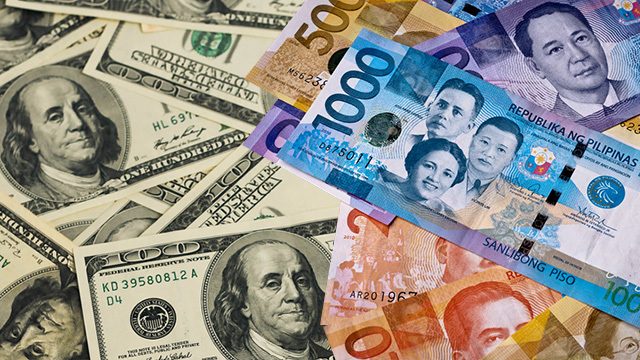SUMMARY
This is AI generated summarization, which may have errors. For context, always refer to the full article.

MANILA, Philippines – The Philippine peso weakened to P54.065 against the dollar on Monday, June 20, the weakest in over three years.
This is the worst performance of the peso since October 12, 2018, when it closed at P54.08.
The peso joins other currencies in Southeast Asia, as the United States’ Federal Reserve indicated that it would further increase interest rates to tame inflation.
Economist and Rappler columnist JC Punongbayan said the local currency is poised to weaken more.
“The peso’s continued weakness is unsurprising since US inflation has increased to its highest level in nearly 41 years, and the US Fed has responded by steeply raising its benchmark interest rate. With the Fed poised to increase its benchmark interest rate further, expect the peso to become a lot more weaker vis-à-vis the US dollar in the coming months,” Punongbayan said.
RCBC chief economist Michael Ricafort said the next resistance level for the peso is P54.325, which was last posted on September 26, 2018.
With the peso depreciating, is this a win for households relying on dollar remittances from overseas Filipino workers (OFWs)?
“On the impact on OFW families, higher US dollar would increase the peso equivalent of remittances, in view of the nearly 6% depreciation since the start of 2022, but this is negated by higher prices or inflation, which is already at a new 3.5-year high of 5.4%,” Ricafort said.
The Philippine government expects inflation to average between 3.7% and 4.7% in 2022, higher than its initial outlook of 2% to 4%.
Oil companies have constantly been raising pump prices, as global prices fluctuate due to Russia’s invasion of Ukraine.
Meanwhile, Ricafort added that a weaker peso exchange rate and higher global and local interest rates would also lead to higher debt servicing and overall debt levels. – Rappler.com
How does this make you feel?






![[ANALYSIS] A new advocacy in race to financial literacy](https://www.rappler.com/tachyon/2024/04/advocacy-race-financial-literacy-April-19-2024.jpg?resize=257%2C257&crop_strategy=attention)


![[In This Economy] Can the PH become an upper-middle income country within this lifetime?](https://www.rappler.com/tachyon/2024/04/tl-ph-upper-income-country-04052024.jpg?resize=257%2C257&crop=295px%2C0px%2C720px%2C720px)
